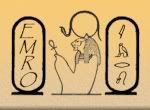
This past weekend, I saw Pan's Labyrinth. I considered reviewing it here in my blog, but it's just too amazing for words, frankly. It has made me preoccupied with an issue, however. A few years
 ago, I read the book by Dr. Clarissa Pinkola Estes, Women Who Run With the Wolves. A large part of the book is dedicated to discussing the old faerie tales (Brothers Grimm, et. al.) and how they were mostly cautionary tales for girls so that they had a mythology to prepare themselves for life as women--to navigate that sometimes dangerous world.* Estes pointed out that modern faerie tales have been "sanitized for our protection," mainly through the efforts of Disney. Girls, and boys as well, have been subsequently left in the dark about the dangers of life, because they lack the coded language of myths, fables, and faerie tales. Stories are painstakingly prepared so that they DON'T scare children, out of fear of traumatizing them. We have a movie rating
ago, I read the book by Dr. Clarissa Pinkola Estes, Women Who Run With the Wolves. A large part of the book is dedicated to discussing the old faerie tales (Brothers Grimm, et. al.) and how they were mostly cautionary tales for girls so that they had a mythology to prepare themselves for life as women--to navigate that sometimes dangerous world.* Estes pointed out that modern faerie tales have been "sanitized for our protection," mainly through the efforts of Disney. Girls, and boys as well, have been subsequently left in the dark about the dangers of life, because they lack the coded language of myths, fables, and faerie tales. Stories are painstakingly prepared so that they DON'T scare children, out of fear of traumatizing them. We have a movie rating system that sometimes seems rather arbitrary and based on "bad words" and not bad ideas. Whereas the old faerie tales taught girls to protect themselves, make wise decisions, and essentially be the heroines of their own lives, modern stories make them depend on an external rescuer. My questions are the following: What thing(s) in Western culture in particular have/has changed that a lot of parents want to shelter their children from scary stories? Do you think it is important to tell myths to children (scary and non-scary)? Why? Where do you draw the line if you tell a child a scary story? When it becomes gratuitous and without any instructional value? Somewhere else? Can your recommend any contemporary children's literature that fulfills the old role of the classic cautionary tales?
system that sometimes seems rather arbitrary and based on "bad words" and not bad ideas. Whereas the old faerie tales taught girls to protect themselves, make wise decisions, and essentially be the heroines of their own lives, modern stories make them depend on an external rescuer. My questions are the following: What thing(s) in Western culture in particular have/has changed that a lot of parents want to shelter their children from scary stories? Do you think it is important to tell myths to children (scary and non-scary)? Why? Where do you draw the line if you tell a child a scary story? When it becomes gratuitous and without any instructional value? Somewhere else? Can your recommend any contemporary children's literature that fulfills the old role of the classic cautionary tales?* A characteristic of the mythopoetic movement is a tendency to retell fairy tales and engage in their exegesis as a tool for personal insight (wikipedia.org). See also Joseph Campbell.
Top image: from Pan's Labyrinth
Inset images: by Gustave Dore
Top image: from Pan's Labyrinth
Inset images: by Gustave Dore
© Stephanie Lewis, 2007





1 comment:
From what I understand through study of the German language and culture, they still use the traditional Grimms stories in Germany. I've seen some of the books with collections of the tales and they are cautionary — children in the U.S. would immediately be sent to therapy after reading them. ;)
Post a Comment